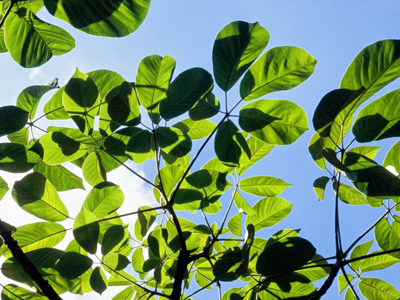
Unit 2 - Photosynthesis
Photosynthesis is the process in which plants, using sunlight, create sugars by combining carbon dioxide with water. It is important that students of GCSE Biology understand photosynthesis and this quiz will help them to revise.
Simply put, photosynthesis is the process by which plants feed. Since they are at the start of most food chains and food webs, you could say that they make most of the food for the planet! Photosynthesis is the making of sugars from carbon dioxide and water. It requires energy in the form of light, hence the name of the process (photo means relating to light and in terms of chemicals, synthesis means building a more complex compound from simpler substances). The waste product is oxygen which is needed for aerobic respiration in living organisms. Until green plants had built up sufficient oxygen in the Earth's atmosphere to create an ozone layer, animal life was restricted to living under water, where it was protected from the UV radiation from the Sun.
Light energy is absorbed by the chlorophyll in green plants and algae. This energy is used to convert carbon dioxide from the air and water from the soil into glucose. This glucose can be stored as starch, converted into cellulose for making cell walls, converted into proteins or used in respiration. Plant cells respire at the same time as photosynthesis takes place but during the day, photosynthesis produces more oxygen than is used up in respiration.
Most plants have evolved leaves to make the process of photosynthesis more effective. Leaves have a large surface area and are very thin. This means that gases can get in and out more easily and it also maximises the amount of light energy reaching the chlorophyll. Chlorophyll is found in most plant cells and is contained within structures named chloroplasts. Chlorophyll absorbs the red and blue wavelengths of light from the sun but reflects the green, which is why plants appear green. There are types of chlorophyll that absorb other wavelengths, making certain plants and algae appear more red. It is possible to grow plants under artificial lighting but sunlight is the best source of light for photosynthesis.
Ready for more?
not all...
quizzers. Try to win a coveted spot on our Hall of Fame Page.







